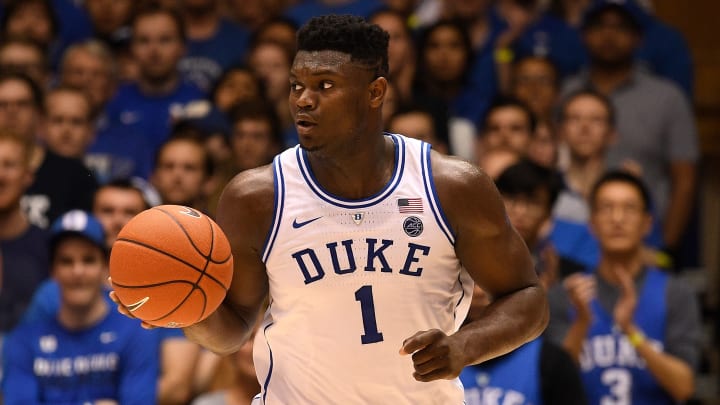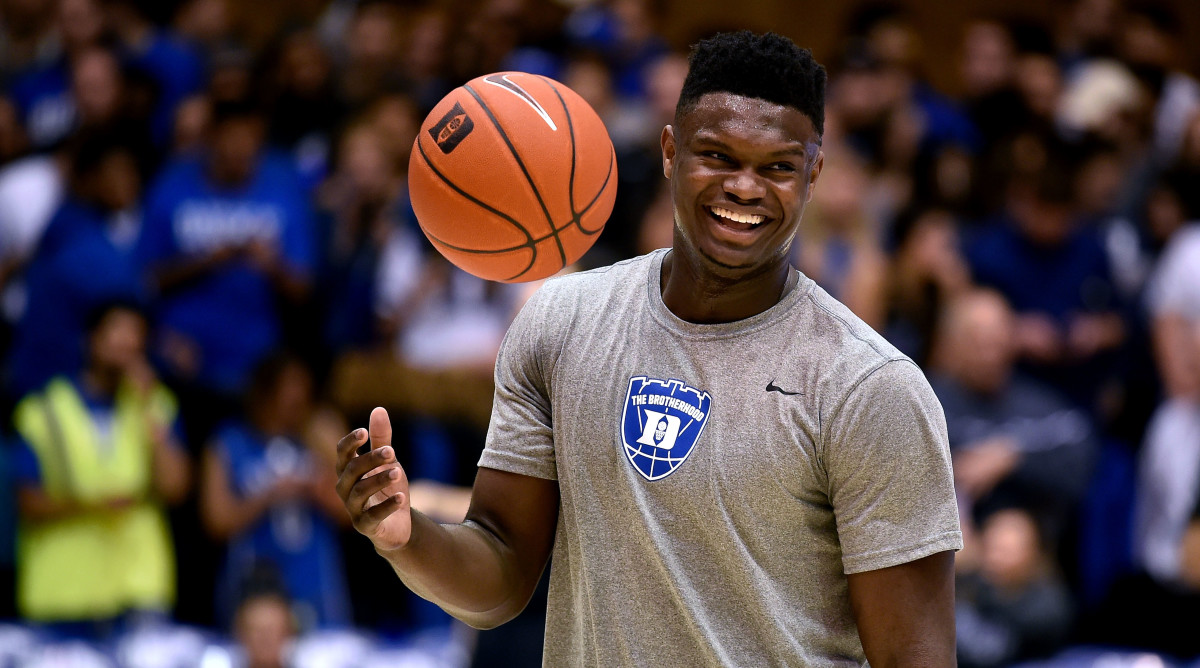Considering the Best NBA System for Zion Williamson

Time and again, one of the trickiest factors to assess when it comes to projecting a NBA prospect’s development is the role of team fit. In common parlance, this is the question of nature versus nurture; talent identification is only part of the equation. Giannis Antetokounmpo’s natural ability and work ethic would have led him to success just about anywhere, but does he become Point Giannis if he lands in an organization other than Milwaukee? NBA teams can’t know the answers to these questions, but they can try to tackle them proactively. In only the rarest of cases does sheer basketball talent render situational factors irrelevant. Drafting is as much about finding the player you want as it is having a vision of how to cultivate that person and his on-court skill set within a winning framework.
The philosophizing brings us to consider Zion Williamson, as unique an amateur prospect as has ever entered the NBA, and a rare talent who will immediately ask these questions of whichever organization wins the right to select him first overall. Next week’s draft lottery will effectively chart the fate of whoever wins, and likely take care of the decision-making aspect for them. Williamson is so entrenched as the consensus top prospect, bearing the immediate star power to inject energy into a franchise, that the optics of not selecting him would create a problem of outward perception. That doesn’t mean Williamson arrives without any risk baked in—after all, there’s natural injury risk when you’re 6’7” and making explosive aerial plays while weighing somewhere near 300 pounds. But certainly, you’d be remiss not to find out.

After all, there’s a chance Williamson is a generational player. Once you have him, it becomes a matter of how you get him there. Surely, this will be a desirable quandary for an organization to solve, but unique players come with unique strengths and weaknesses. As we’ve maintained dating back to the off-season, Williamson happens to be arriving in the NBA at the perfect time. Where he once might have been labeled as a positional tweener, now you can imagine him as a dynamic, positionless star, along the lines of how he was utilized in college. The scary thing is that Williamson was splitting the lion’s share of touches with R.J. Barrett at Duke, and played on a team that lacked three-point shooters and didn’t always space the floor very well as a result. Envisioning an offense fully engineered to optimize his abilities from square one—think about how the Rockets have become a vehicle for James Harden—could be a frightening proposition.
While Williamson is not a nominal point guard, envisioning the most tantalizing possible offensive role for him involves the ball being in his hands more often than not. This is where the league is headed—look at Harden, look at Giannis, and look at Ben Simmons, three variations of a similar idea. Point Zion is something maybe not every team would dare to try, but an unorthodox concept his eventual employer will be foolhardy not to experiment with. There are two primary tenets that make that possibility feasible: he’s a naturally unselfish player with above-average decision-making skills, and the fact that he’s a complete statistical outlier finishing around the basket. As has become the accepted modern approach, the primary types of shots smart NBA teams want to take are layups (which are converted at the highest clip) and three-pointers (which mathematically are, yes, worth more than twos). The other acceptable outcome in that puzzle is a trip to the free throw line. The reason why Harden has become historically potent is that he’s become a master of all three, rarely breaking from the formula.
On Zion’s end, there’s understandably still a long way to go before ascending as the sort of basketball-math overlord that can anchor a contending team, but you can see the pathway. He’s such a natural finisher and so strong and explosive in space that he should be able to get into the paint with ease off the dribble, and should draw contact and live at the line with the way NBA games are officiated. He rarely takes a bad shot, and with his ability to grab and go off blocks and rebounds and run the floor with the ball in his hands, Williamson is a prolific conduit for efficient transition play. That alone, coupled with his defensive ranginess and rebounding skills bakes in a value floor. But to effectively shoulder the type of offense he could be capable of anchoring, he’ll need to become a better ball-handler (particularly going to his right) and a better free throw shooter (he shot 64% on 203 attempts at Duke) at minimum. And it’s not like asking him to revamp his style of play—if he’s willing to put in the work, those are two areas where Williamson can improve. With his strength, athleticism and around-the-rim scoring acumen, it’s not hard to see him becoming even more of an efficiency machine. But he needs the ball in his hands to maximize that potential.

There’s also the matter of three-point shooting, which is trickier to project with optimism. Williamson isn’t a Simmons-esque non-shooter—he has demonstrated some touch, and made 33.8% of his 71 attempts from outside at Duke. But noting the iffy free-throw clip and the fact he is purely a set shooter right now (according to Synergy, he shot just 12 jumpers off the dribble this season and made two of them), it’s not necessarily reasonable to expect he improves much, and certainly not in a dynamic fashion. But hitting enough of his threes to keep defenders honest for now would go a long way. The good news is that Williamson rarely forces an uncomfortable look anyway, but in college, he could basically get to the basket whenever he wanted. When that becomes less of a luxury, and down the line when his athleticism begins to wane, he’ll need to evolve, too. If injuries ever become an impediment for him, Williamson’s skill level will have to cover for whatever he loses. Not every athletic marvel can pull off a Blake Griffin-like mid-career reinvention.
Still, it’s hard not to look at Williamson’s age (he only turns 19 in July), prodigious college output and elite-caliber physical gifts and not see a starry future. Imagine putting four three-point shooters around him and letting him go to work with the ball in his hands, at a point in his career where he’s capable of making reads and creating shots for others, and that’s where the maximum upside lies. If he puts in the work to get there, it’s not a total pipe dream. It might not be easy for whoever wins the lottery to retool their entire roster around him right away, but if Williamson delivers anything close to what he might become, at some point, he dictates the direction of your roster. He has to. And for all the debate about what his best team fit might be, the answer could be as simple as a forward-thinking organization. Here’s hoping.
